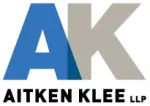On March 1, 2017, Justice Campbell released his Judgment and Reasons in Nintendo v. Go Cyber Shopping. Nintendo was wholly successful in its claim against GCS for technological protection measures and copyright infringement pursuant to the Copyright Act.
Broadly, the application concerned the pirating of games on Nintendo's DS, 3DS and Wii game consoles. This proceeding concerned two types of copyrighted works present in Nintendo's game cards and discs: (1) computer code and data used by Nintendo as part of its TPMs ("Header Data"), and (2) video games developed for Nintendo's video game consoles.
Since at least 2013, GCS has advertised and offered for sale, either through its websites or at its retail store, certain devices designed to allow unauthorized games to be played on the Nintendo DS and 3DS and Wii gaming consoles.
GCS filed no evidence and did not cross-examine Nintendo's witnesses. Justice Campbell held that Nintendo's uncontradicted evidence was unassailable in fully proving the claims made.
Secondary Infringement
Justice Campbell accepted that GCS infringes Nintendo's copyright in the three Header Data works contrary to s. 27(2) in that:
- unauthorized copies of the works are either contained on game copiers when they are sold or are obtained by following the instructions provided by GCS;
- GCS knew, ought to have known, or was wilfully blind to the fact that the game copiers contained such works; and
- GCS sold, distributed, offered for sale, and possessed the game copiers for the purpose of those activities.
Circumvention of Technological Protection Measures
In 2012, sections 41 and 41.1 were introduced into the Copyright Act dealing with the circumvention of technological protection measures. Section 41 defines the terms "technological protection measure" and "circumvent" as:
Technological protection measure means any effective technology, device or component that, in the ordinary course of its operation, (a) controls access to a work, to a performer's performance fixed in a sound recording or to a sound recording and whose use is authorized by the copyright owner; ...
Circumvent means, (a) in respect of a technological protection measure within the meaning of paragraph (a) of the definition technological protection measure, to descramble a scrambled work or decrypt an encrypted work or to otherwise avoid, bypass, remove, deactivate or impair the technological protection measure, unless it is done with the authority of the copyright owner;... ,
All the asserted access control measures by Nintendo were considered to be TPMs under section 41 of the Copyright Act. GCS's game copiers circumvented the TPMs used to control access to the Nintendo games.
GCS did not dispute that it has distributed, offered for sale, and sold game copier devices or that its game copiers are "not commercially significant other than to circumvent the TPMs through the descrambling of encrypted communications." GCS knew that its game copiers were used by its customers to play pirated Nintendo games. Justice Campbell rejected GCS's argument that the copying devices were used to allow users to access the operating system or to allow "homebrew" software to be run on Nintendo's gaming systems. By distributing, offering, and selling the game copiers, GCS contravened section 41.1(1)(c).
Remedies
Nintendo elected to recover statutory damages for both copyright infringement and TPM circumvention.
Nintendo argued that statutory damages for TPM circumvention should be calculated on a per-work basis (e.g. each copyrighted work that the circumvention grants unauthorized access to attracts a separate award of statutory damages). Justice Campbell rejected GCS's submission that statutory damages are not available for circumventing protection measures, holding;
[137] First, actual infringement of copyright is not necessary for an award of statutory damages for TPM circumvention. This proposition is self-evident from the scheme of the statute. Subsection 41.1(4) provides that the copyright owner is entitled to all remedies where "a technological protection measure has been or could be circumvented as a result of the contravention of paragraph (1)(b) or (c)". This implies that actual circumvention is not required. It logically follows that actual access or copying of a copyrighted work is also not required. Moreover, s. 41.1 does not limit damages for TPM circumvention to circumstances involving actual copyright infringement. Had Parliament intended to make actual copyright infringement a necessary element for recovering damages, it easily could have done so as it did in s. 38.1(1.1) in respect of an infringement under s. 27(2.3).
Noting a need for deterrence, Nintendo was awarded $11.7 million in damages, corresponding to the maximum of $20,000 for each of 585 different Nintendo games. Nintendo was also awarded $60,000 for copyright infringement in respect of the three Header Data works.
Punitive Damages
In addition to statutory damages, Justice Campbell held that the defendant had shown a callous disregard for Nintendo's rights and intended to expand its business to include Nintendo's next generation of gaming console. That Nintendo never served a cease and desist letter was irrelevant as there was no evidence that doing so would have made any difference. Justice Campbell held that GCS's conduct warranted a $1,000,000 punitive damage award.
A copy of the decision may be found here.
The content of this article is intended to provide a general guide to the subject matter. Specialist advice should be sought about your specific circumstances.

